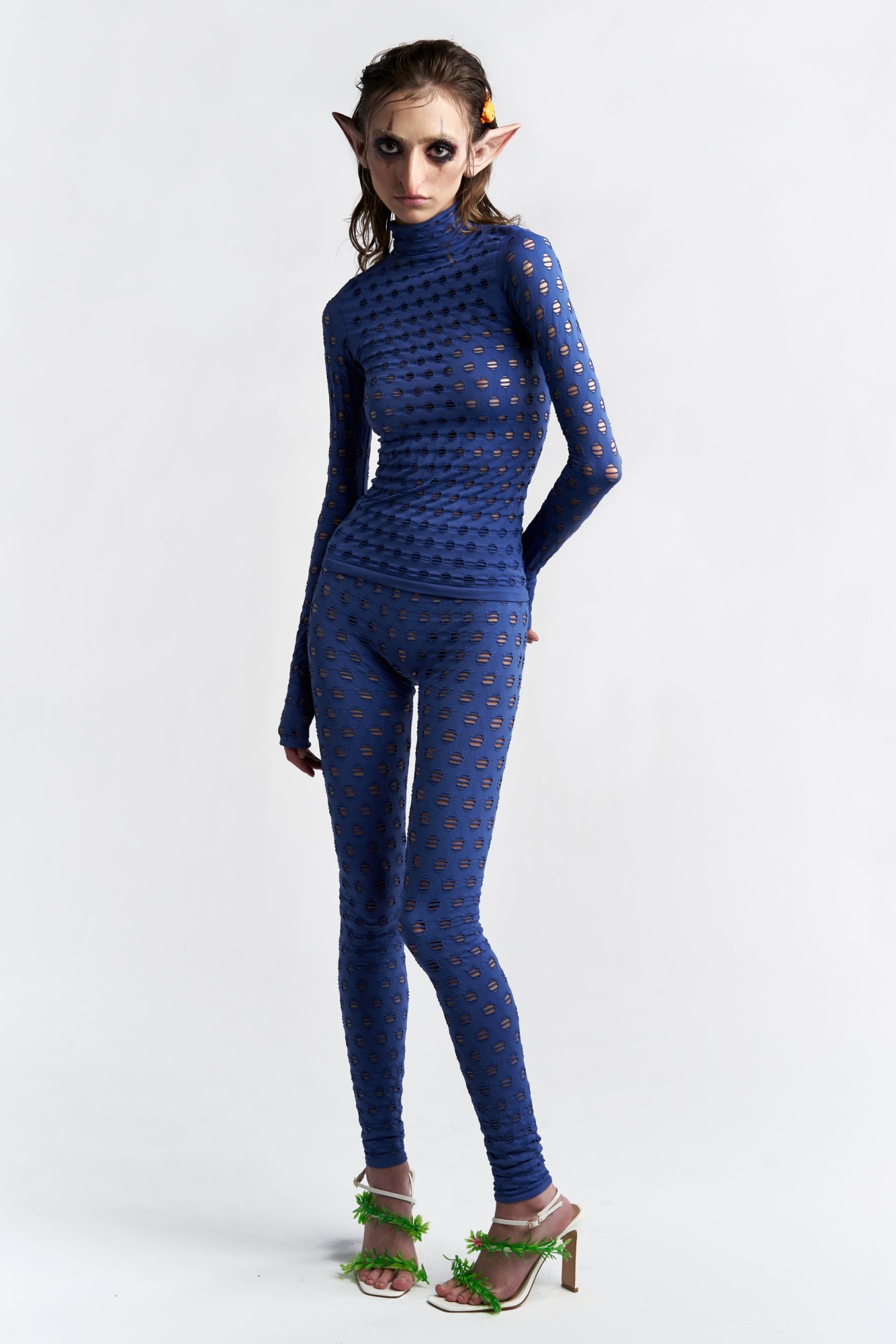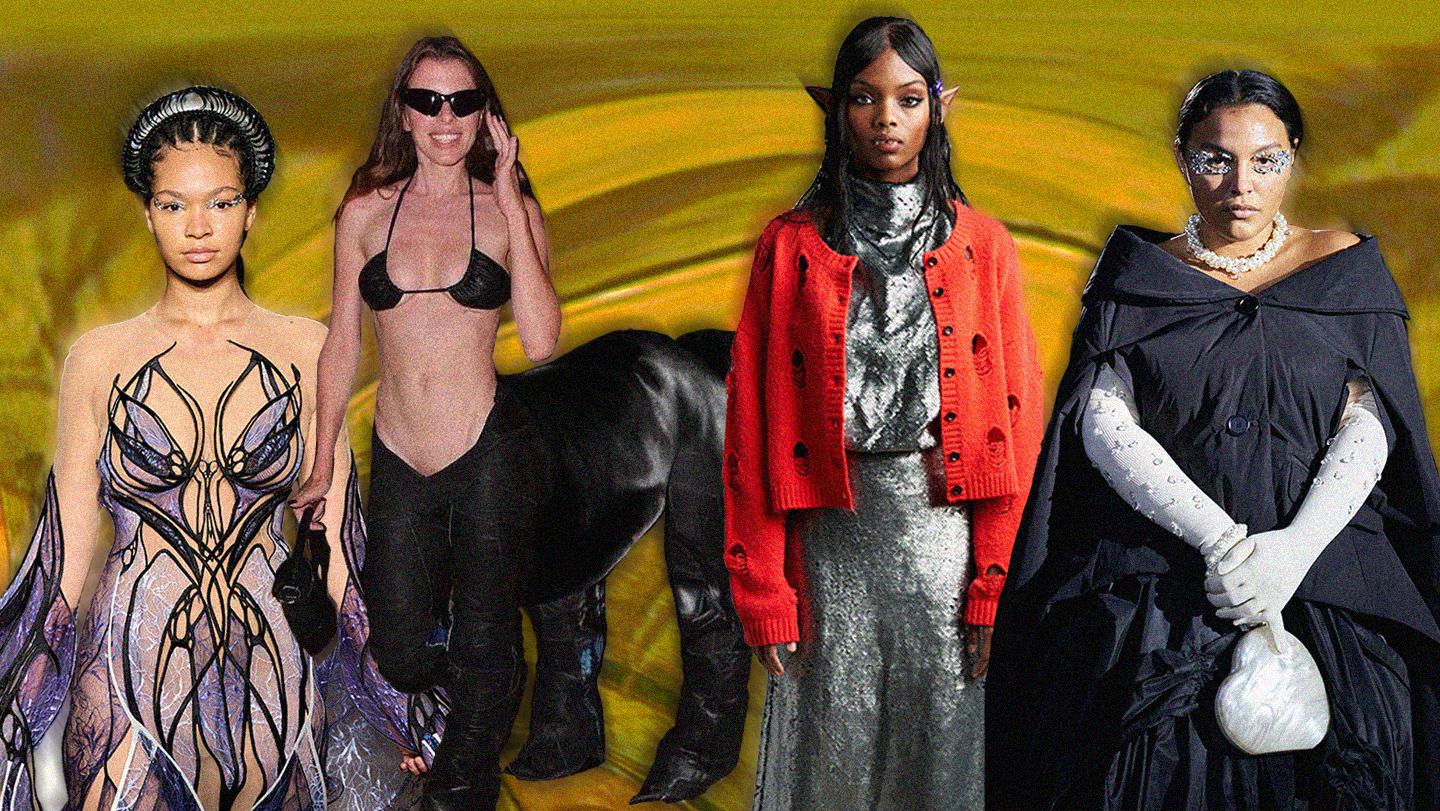What is fashion without legends and folklore? No, we’re not talking about iconic designers and supermodels, or the Taylor Swift album — we’re talking about literal mythology. In fact, from Julia Fox’s centaur trousers and Lil Nas X as a pole-dancing demon, through to references on the AW22 catwalks, ornate nymphs at Iris Van Herpen, fairytale angels at Louis Vuitton and Olubiyi Thomas’ ‘Phoenix Rising’ collection for SS23; fantastic beasts are trending. They’re as surreal as they are scary.
To be honest, when life feels like a flaming, Boschian nightmare there’s an urge to escape wars and constraint, and to rise up from the ashes. It’s why fairycore followers are flying high above the world’s fallout on TikTok, half-horses became high-status for Burberry’s Adam Driver campaign and Siren Eyes beauty is giving us sea monster realness. If this trend is anything to go by, material girls are out, empyreal girls are in. After all, fashion is all about fantasy.
Fashion’s fixation on the ethereal is, however, hardly new. Cases in point: Alexander McQueen’s golden-horned Mr Tumnus on the Givenchy catwalk in 1997, Thierry Mugler’s fantastical animal-woman hybrids, and Alessandro Michele’s love of lore – the Gucci Dionysus bag shares a name with a Greco-Roman deity and let’s not bypass models carrying their own heads, as if severed Orthrus creatures. Notably, Jared Leto rolled up to the Met Gala with the Gucci gang in 2019, clutching an eerie, bearded replica of his head and it sure raised a few eyebrows.
There are also references we’ve taken for granted, like the Medusa logo and heaven-high Aevitas heels at Versace, where myth is somewhat of a muse to Donatella Versace’s vision of fierce womanhood. And don’t forget Hermès and Nike, both of whom took their names from Greek gods too, reiterating the notion that fashion mega-brands are really just a modern-day pantheon of gods idolised the world over.
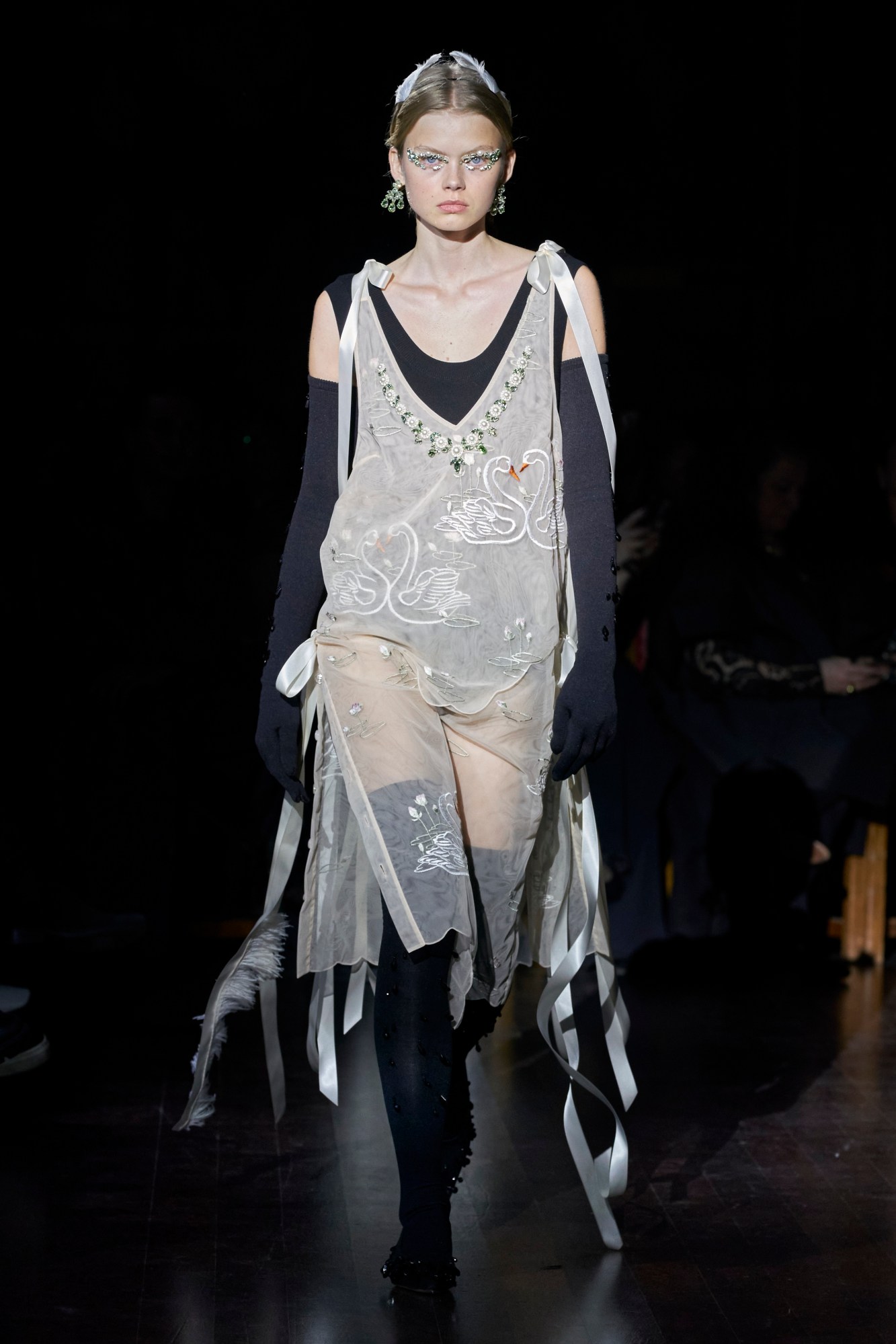
However, more recently — perhaps because of a slew of movies and shows like Morbius, The Witcher, and a Game of Thrones prequel on the cards — mythology has become a mood across the AW22 collections. Simone Rocha ruffled her feathers with a collection inspired by ‘The Children of Lir’ – an Irish tale that sees four siblings beguiled into swans, translated through tufty organza dresses in ominous, bottom-of-the-lake shades. Menswear designer Saul Nash surfaced some Mami Wata spirits from the pan-African mythological canon, screen-printing their scaly forms onto track jackets. His aquatic oeuvre speaks to the mighty Poseidons of a past talent pool: Thierry Mugler and the SS89 pearly mermaids, then, the iconique Plato’s Atlantis by Alexander McQueen. All very apt, when there’s a new Aquaman, and a live action The Little Mermaid making a splash in cinemas next year.
Back on land, for CSM grad Liza Keane, forest beasts became a cipher for her vision of fang-bearing feminism, and Ibrahima Gueye looked to sorcerous predators for his final collection at IFM. Entitled ‘Simb’, it follows the journey of a possessed lion-hunter from the Senegalese plains.
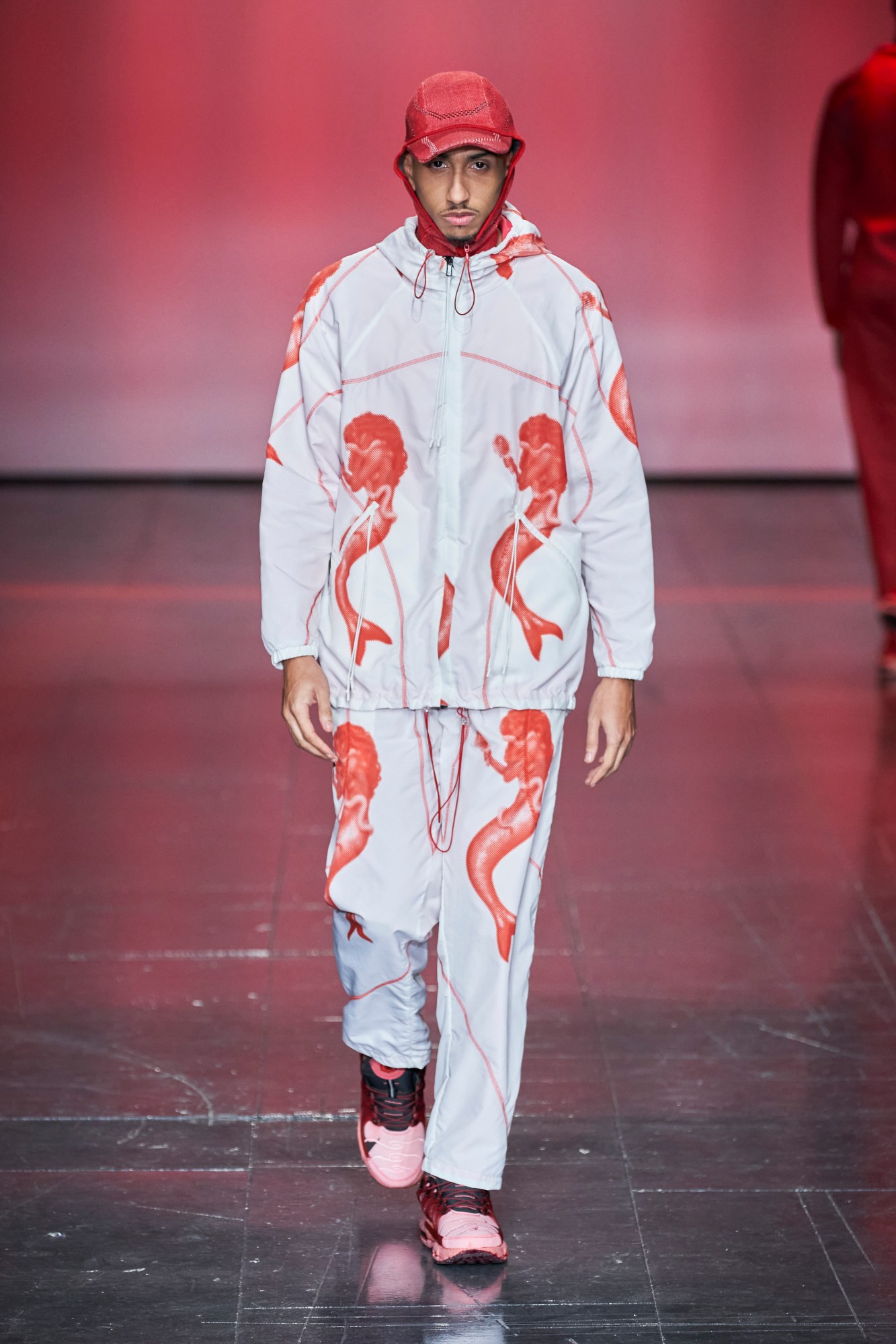
Examples like these attest to something that lies at the heart of all myths – that they’ve always served as a means to connect to the planet. After all, the tarot card readings sweeping TikTok with spirituality today are rooted in pagan rituals and earthly folklore, and as climate crises continue to ravage Mother Earth, it’s no wonder that we’re looking for ways to rediscover the intrinsic, instinctual bonds that link humans to the planet we live on.
“This myth revival is about needing to reconnect to the planet, and our changing environments. When you look at statistics or science, there is no emotional, anthropomorphised way to truly understand the world around us,” says Dimitra Petsa, the founding force behind Greek label, Di Petsa. Her AW22 show centred on the nurturing instincts of Persephone, a deity from – you guessed it – Grecian mythology, entailing soaked drapes of fabric that swathed pregnant bellies and conjuring images of springtime rebirth. “All folkloric symbols and fairytales are entwined with nature, and we are reminiscing, longing for that intimacy beyond the screen,“ she adds.
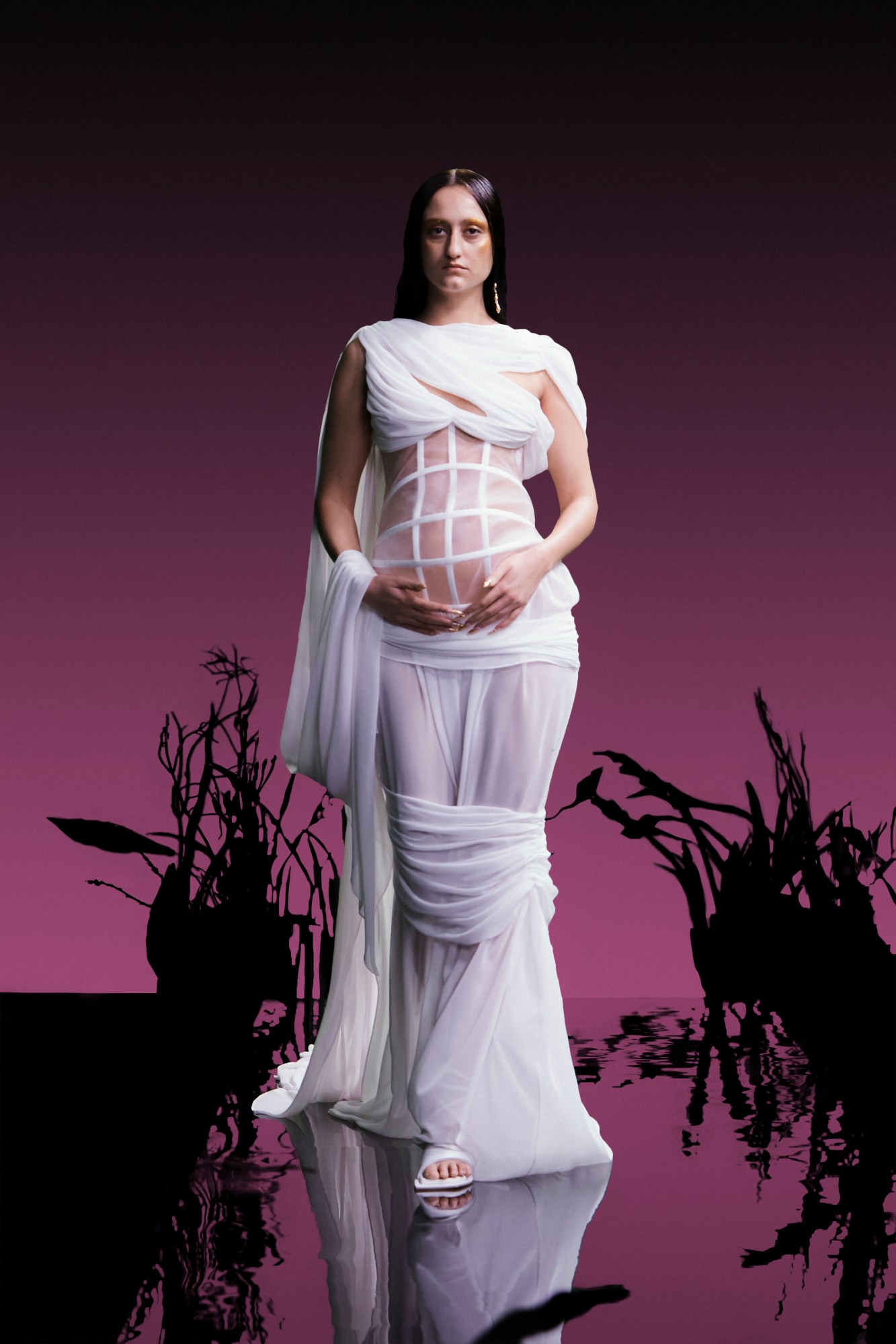
For Maisie Wilen — whose AW22 collection featured an army of beasts with fangs, goblin green skin, and elf ears to rival Middle-earth — the message was simple: ghouls and monsters exist in real life, too, and the surreal is what feels hyperreal right now. “Fantasy is what propels fashion forward – and right now it feels deeply surreal,” says Maisie, her latest show taking the form of a hologram. Somewhere between fiction and the physical, models were filmed IRL then later projected into thin air. “Reality is disorienting and outrageous, and creative work reflects that. I presented a show that would challenge the senses, distort space, and by utilising technology we’re no longer tethered to what can be created and the possibilities become endless.”
Indeed, at times when the present can feel unfamiliar, the past — albeit a mythical one — offers something of an escape route. Whether your reaction to ancient fantasy is an inquisitive head tilt or a disapproving, dragon-fearing shudder, everyone can agree that mythology opens the mind to new possibilities and ways of thinking: “Fashion cannot thrive without imagination,” Dimitra concludes. “In choosing the clothes that we wear, we’re all creating a mythical character within our own life story.”
